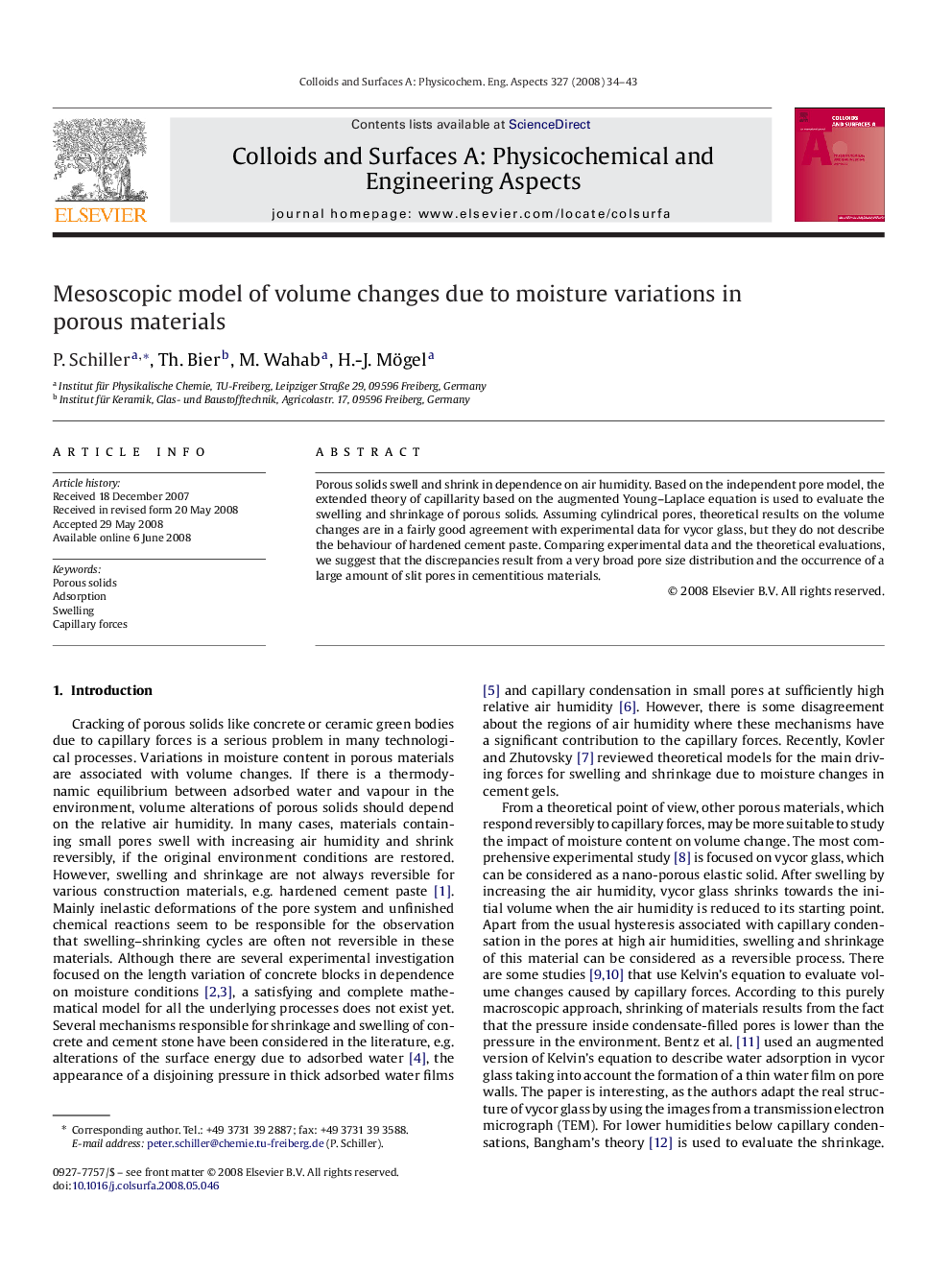| Article ID | Journal | Published Year | Pages | File Type |
|---|---|---|---|---|
| 596387 | Colloids and Surfaces A: Physicochemical and Engineering Aspects | 2008 | 10 Pages |
Abstract
Porous solids swell and shrink in dependence on air humidity. Based on the independent pore model, the extended theory of capillarity based on the augmented Young-Laplace equation is used to evaluate the swelling and shrinkage of porous solids. Assuming cylindrical pores, theoretical results on the volume changes are in a fairly good agreement with experimental data for vycor glass, but they do not describe the behaviour of hardened cement paste. Comparing experimental data and the theoretical evaluations, we suggest that the discrepancies result from a very broad pore size distribution and the occurrence of a large amount of slit pores in cementitious materials.
Related Topics
Physical Sciences and Engineering
Chemical Engineering
Colloid and Surface Chemistry
Authors
P. Schiller, Th. Bier, M. Wahab, H.-J. Mögel,
